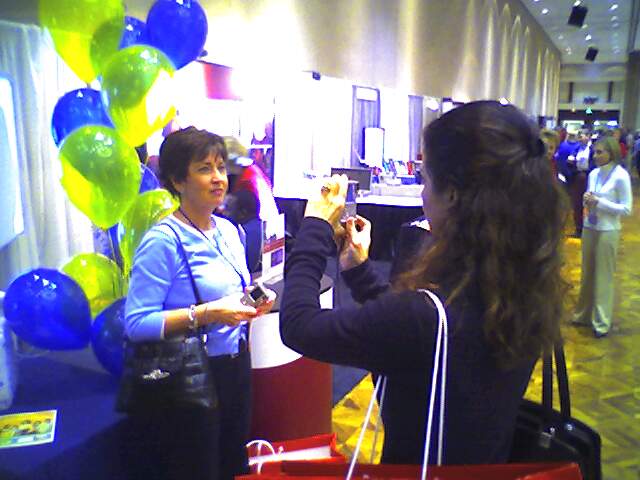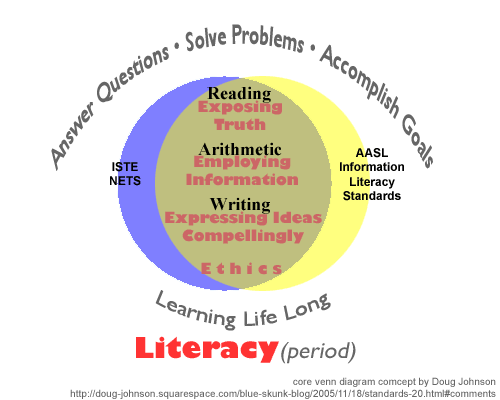NCETC with Governor Angus King
9:15 AM
I sitting in the keynote address, being delivered momentarily by Governor Angus King, the former governor of Maine, and chief evangelist if not architect of that states 1:1 initiative.
Right now, Gwen Varsamis, the director of the conference is making introductions. I’ll be posting updates to this entry as I hear ideas that especially strike me.
9:26 AM
A great euphamism:
“Just cause the cat had it’s kittens in the oven doesn’t mean you got biscuits.”
In Maine…
Every computer is in the classroom every day. It’s not computer labs and laptop carts. Its a computer in every hand, and this is transformational.
37th per capita income
Industry and the value of natural resources were decline.
How do you change that when the world is changing really fast.
9:36 AM
Insight # 1
Again, educators have been asked to read, The World is Flat. He says to have a bottle of advil with you when you read it.
We are in danger of losing everything we’ve built up over the decades. Anything that can be done without touching you or something that you own, it can be outsourced to another continent.
Insight # 2
Governor’s Association meetings. They are all chasing the same thing — the future. You don’t get ahead of the competition by keeping up, but everyone was doing the same things to reach the future.
Insight # 3
Everything we did was incremental! It’s baby steps. Are we progressing, or changing. Is progress the same as change?
9:54 AM
When the initiative was announced and the e-mails were 10 to 1 against putting laptops into the hands of students, and 7th graders became the most despised minority in the state. One reported called it “The governor’s laptop giveaway.”
They did a two-prong campaign, one for the legislature and one for the public. A lot of the legislators didn’t know what the computer could do. He set up a wireless network in his office for demonstrations. Apple came into middle schools, set up computers and networks and teach about the Battle of Gettesburg. Teachers, parents, and board members came in to learn what could happen to classrooms.
10:10 AM
The people of Guilford, Maine, decided not to wait for the legislature and governor, raise the money, and implemented 1:1 right away. The governor has to sign the budget, so the money came.
There were compromises. Deciding whether the students could take the computer home, because a local issue. A mistake was not training administrators and tech coordinators. They can be a barrier, you need the leadership. There are places where it’s going great and places where 1:1 is not running well. The factor is, without exceptions, is the leadership.
Test scores won’t go up. Writing is the exception. Writing will improve. Discipline referrals went down 75% and attendance went up. Breakage rate is about 3%, and there is no difference between districts where students took them home and those who kept them in school.
10:17 AM
The contract with Apple is $300 per student per year for computer, training, network, etc. That’s 0.5% of state education budget.
I defy you to do any thing else with such impact for one one-half of one percent.
And by the way, this is not a glorified computer lab. Get that concept straight.
- Vision one is Education
- Vision two is Equity
- Put Maine on the Map
Darwin: Survival of the fittest. No, that’s not what he said. The fittest are those organisms, organizations, and individuals who are most adaptable to change, will survive.
Gretsky: Scored more goals than anybody else, and he’s not big. His Canadian (an unarmed north american with health insurance) answer, “I skate to where the puck is going to be, everyone else skates to where it is.


 There has been a lot of talk about information skills and technology skills and how they apply to learning, especially to life-long learning and staff development. Jeff Utecht, of Shanghai, took all of this into an interesting direction when he loaded the ISTI NETS into his word processor, did a global search and replace, and changed all references of technology to information. Read
There has been a lot of talk about information skills and technology skills and how they apply to learning, especially to life-long learning and staff development. Jeff Utecht, of Shanghai, took all of this into an interesting direction when he loaded the ISTI NETS into his word processor, did a global search and replace, and changed all references of technology to information. Read 